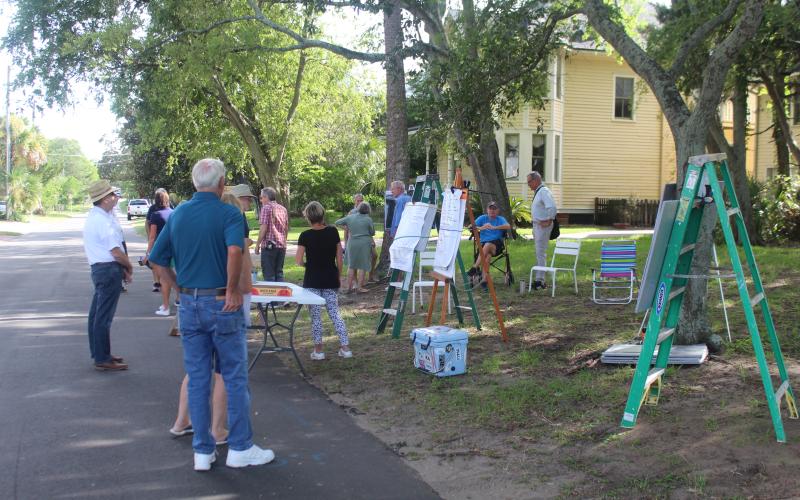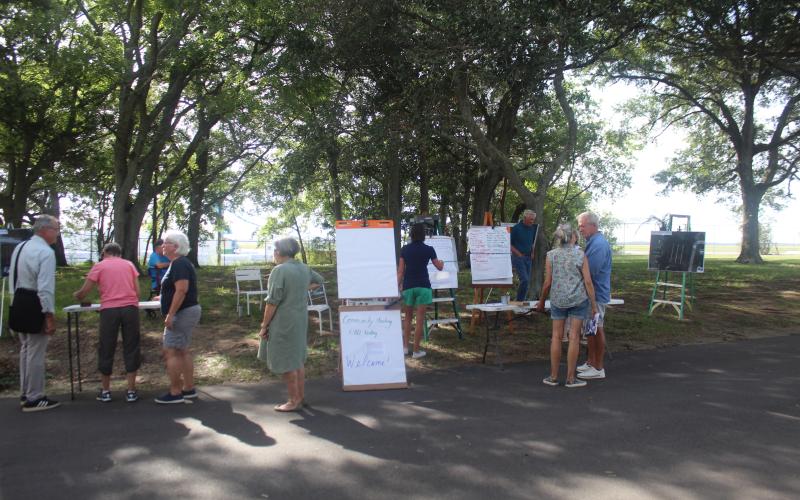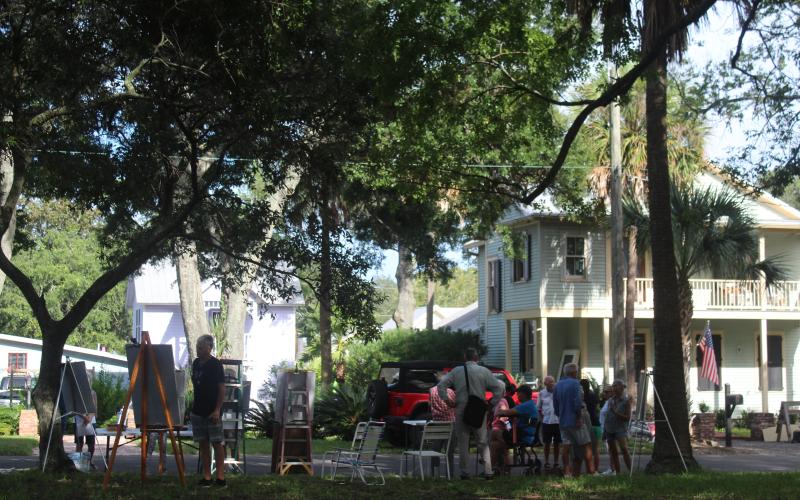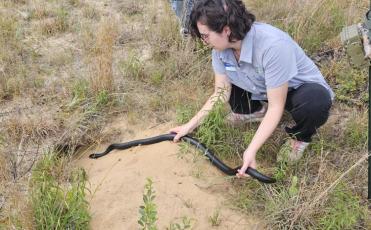The Ocean Highway and Port Authority has three parcels of undeveloped property near the Port of Fernandina that it is considering selling, but residents who live near the land are concerned the sale of the land will lead to use of the parcels that is not in character with the neighborhood.
The plots are at 305 Dade, 332 N. Third and 510 N. Second streets in the Fernandina Beach Historic District. The parcels are each comprised of a number of underlying lots of record. Two of the parcels (with a total of 11 individual lots) are located at the intersection of Dade Street and North Second Street and are zoned R-2, medium density residential. The third parcel (with four underlying lots of record), is located on North Second Street and Escambia Street. That parcel is currently zoned MU-1, Mixed Use.
The OHPA Commission has discussed selling the land, as the authority is cash strapped. Port Executive Director David Kaufman said that since the port’s master plan precludes expansion outside the current footprint of the Port of Fernandina, it is his opinion the port will not use the property, and proceeds from the sale of the property could be used to support the port’s budget.
The port has incurred legal fees in several cases, including one brought by the city of Fernandina Beach regarding Payment in Lieu of Taxes (PILOT), which OHPA has said it does not believe it owes to the city. Those $50,000 annual payments have not been made to the city since 2018, according to City Attorney Tammi Bach. The port authority has been exploring other revenue streams, which include the sale of the property.
Using the sale of the property to pay operating expenses was called a “horrible decision” by OHPA Accountant Pierre Laporte, but the commission is exploring the possibility. Earlier this year, Commissioner Miriam Hill asked Kaufman for a concrete plan to bring in additional revenue to the authority. One of the ideas put forth by OHPA was to bring in cruise ships to the port, but the community was vocal in its opposition, and OHPA agreed not to bring cruise ship traffic to the port. Kaufman has said he has brought other ideas for revenue streams to port operator Savage Industries, but the company did not pursue them.
OHPA had a meeting scheduled for Aug. 31, which was canceled because of Hurricane Idalia. On the agenda for that meeting was discussion of a Request for Proposals for real estate professionals to begin the process of selling the properties. In advance of that meeting, a community meeting was held on North Second Street, the location of one of the plots of land. Easels with aerial photographs of the parcels and the possible effects of selling the land were placed on the property.
The group that held the meeting warned against selling the property, pointing out that selling to pay operating expenses is not a sustainable financial model. Alternatives brought forth included donating the land to the city of Fernandina Beach in exchange for the PILOT payment currently in litigation, to change the zoning and Future Land Use Map designation to Recreation to allow for a passive recreation area or to use the land as a special parking site.
Those who organized the meeting did not only list the possible negative outcomes of selling the parcels but offered mitigations and solutions to problems that could happen if the land is developed. Concerns included added density with the possibility of townhomes, condominiums, tiny homes or short-term rentals, increased traffic and noise, loss of trees and the natural buffer the vacant lots provide and a decline in property values. Possible ways to address those concerns were listed as deed restrictions requiring minimum setbacks and minimizing buildable lot sizes, requiring developers to protect the natural barriers and using a local builders who would work with the Historic District Council.
In an email sent to invite people to the community meeting, Tammi Kosack, who has been an outspoken critic of OHPA and owns a home she is renovating near the port, said it is important to maintain the character of the neighborhood.
“... in just 10 years several homes surrounding the port have gone from derelict to million-dollar renovations and newly built homes followed the Historic District guidelines to fit in with the scale and context of the surrounding homes,” Kosack’s email said. “This is not the place for tiny homes, townhomes, apartments or workforce housing. The history in this area is strong, and the fabric and rhythm of the homes should be continued with conventionally zoned and appropriately scaled homes; minimum 50-foot lots with detached, single family homes.”
In a previous meeting, OHPA Commission Chair Danny Fullwood stated, “We will put deed restrictions on the property to make sure what is built on those lots will be acceptable to the neighborhood and follow historic districts guidelines.”
Kosack said deed restrictions are “the strongest form of a guarantee that we can get to protect these parcels from over development, now and in the future.”
Approximately 30 people attended the meeting, along with Kaufman, Fullwood and OHPA Commissioners Miriam Hill and Ray Nelson. Kosack gave a statement to the News-Leader following the meeting.
“We had a good turnout tonight and captured the sentiments of concerned residents via comment sheets and emails. The overwhelming majority do not think it is a good idea for OHPA to sell assets to pay for operating expenses,” Kosack said. “However, if OHPA proceeds with the sale, neighbors expressed the desire for the wooded lot to be swapped for PILOT monies owed to the city, so the area can continue to be the one bit of shaded greenspace on the block. Additionally, almost 100% of respondents listed deed restrictions requiring minimum 50-foot lots for detached single family homes to ensure long-term compatibility of the development. If OHPA agrees to the deed restrictions, then the feather in their cap would be selecting a broker/developer who has architects that have a history of working with our Historic District guidelines and understands the nuances involved in constructing in-fill housing.”
The canceled OHPA Commission meeting has been rescheduled for 6 p.m. Sept. 13 at the Peck Center in Fernandina Beach. The meeting is open to the public.
jroberts@fbnewsleader.com






